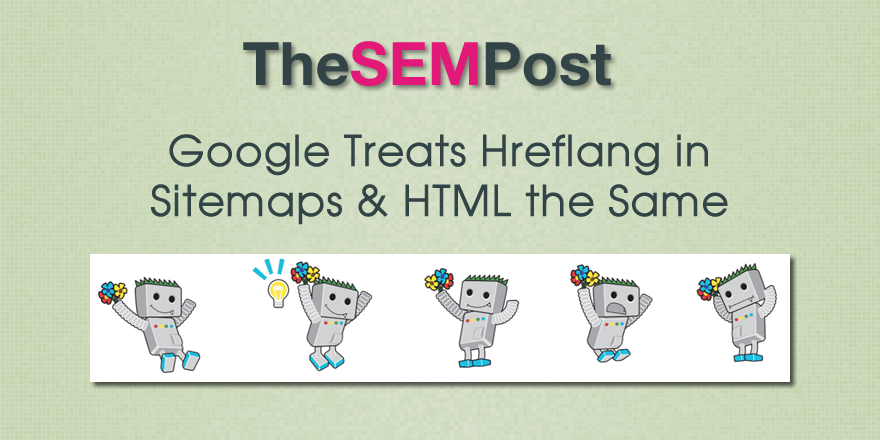
Google Treats Hreflang in Sitemaps and HTML the Same
 There are multiple ways to add hreflang annotations for webpages, but are any of the ways treated differently by Google? Is one way processed faster than another?
There are multiple ways to add hreflang annotations for webpages, but are any of the ways treated differently by Google? Is one way processed faster than another?
The question came up on Twitter, and John Mueller from Google confirmed that Google treats each hreflang application the same, regardless of whether it is in HTML or added in a sitemap.
sure
— John ☆.o(≧▽≦)o.☆ (@JohnMu) June 12, 2018
Someone else then made a comment that it seems one way of adding hreflang – via HTML – is processed faster than hreflang in sitemaps. But Mueller debunked this.
No, processing would be at the same time as with on-page annotations (assuming we've seen the sitemap beforehand, which is the general case).
— John ☆.o(≧▽≦)o.☆ (@JohnMu) June 12, 2018
Instead, it seems that as long as your CMS is pinging with sitemap changes, Google should pick up hreflang in sitemaps just as quickly.
If you ping the sitemap (which your cms should do automatically), we should fetch it pretty quickly.
— John ☆.o(≧▽≦)o.☆ (@JohnMu) June 12, 2018
As for the recommended way to implement hreflang, Google does recommend sitemaps. This is because it is easier to update changes, and it reduces the changes of implementation failure when adding the annotations into the HTML of a page.
But either method works, and Google doesn’t treat them differently depending on which way you implement it, so use the implementation that works best for you.
Jennifer Slegg is a longtime speaker and expert in search engine marketing, working in the industry for almost 20 years. When she isn’t sitting at her desk writing and working, she can be found grabbing a latte at her local Starbucks or planning her next trip to Disneyland. She regularly speaks at Pubcon, SMX, State of Search, Brighton SEO and more, and has been presenting at conferences for over a decade.





